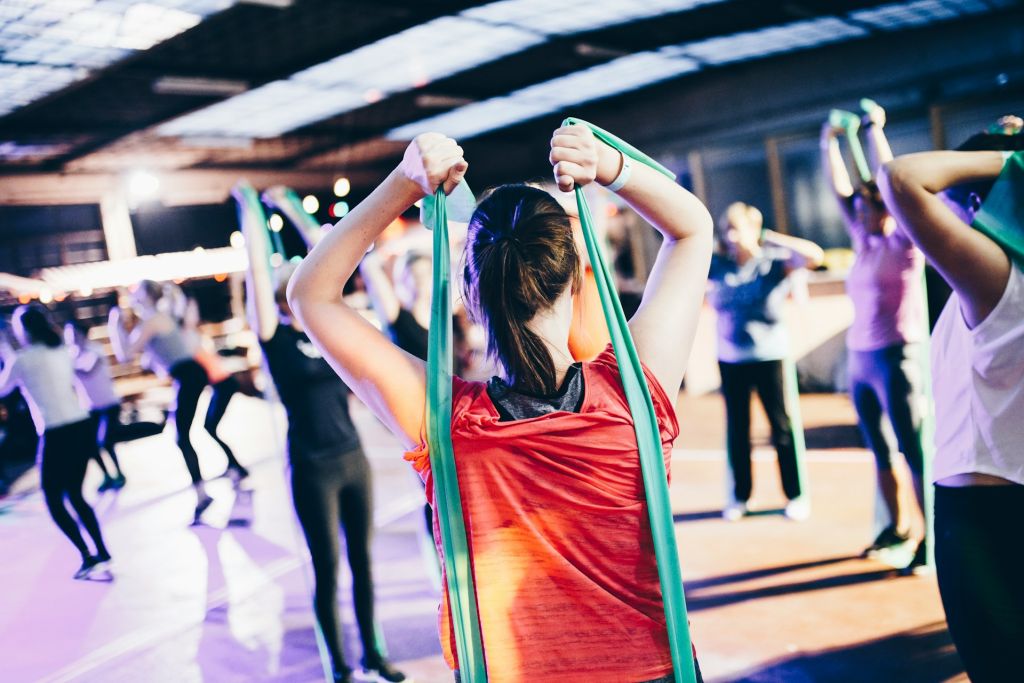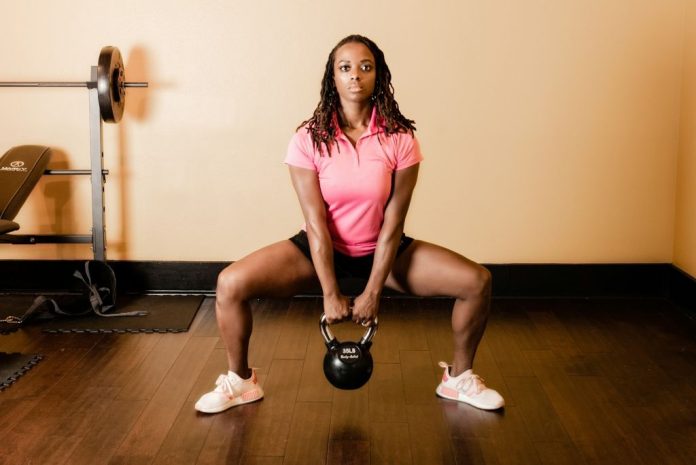When you’re working long hours to achieve a professional goal or balancing heavy work and home responsibilities, it can be hard to carve out time and energy for a workout. It’s extra challenging when you don’t have a clear sense of purpose. Vaguely wanting to “get healthy” doesn’t inspire many to hit the gym consistently or train for a marathon.
That’s where fitness goals can help. These objectives motivate you to incorporate exercise into your daily life by providing a clear sense of direction and a way to track your progress. Fitness goals are a form of extrinsic motivation — they give you a reason to do something apart from simply enjoying it. If you run because you love it, that’s great. But when you don’t want to go for a jog, you can use the deadline of an upcoming race to motivate you to hit the pavement.
How to Choose Fitness Goals
To start setting your fitness goals, consider what you’d most like to achieve in relation to your current physical fitness. It might be something that directly targets your body, such as improving your endurance, strength, or flexibility. Or it might focus more on logistics: finding an exercise routine you can stick to or working out more often.
Weight loss is a common fitness goal but remember: size and weight don’t equate to a healthy body. You can be healthy or unhealthy at any size. And extreme weight loss methods can damage your health more than improve it.
If you feel drawn to a goal focused on body fat, research suggests it’s best to focus on cultivating a healthy lifestyle rather than weight loss. In one ResearchGate study, people who worked on a weight loss goal were less resilient after a setback and lost less weight than those who focused on overall healthy eating.
Once you’ve chosen a few broad fitness objectives, you could make them SMART goals: specific, measurable, achievable, relevant, and time-bound. To turn an objective into a SMART goal, tailor it to yourself and your circumstances using the acronym. You might turn “Run in a competitive race for the first time” into “Build endurance by training for and running in the 10K Boulder Sunset Run on August 26th this year.”
The SMART framework is helpful for people who like clear, precise goals. But if you want to treat your goal as a compass rather than a GPS, that’s okay, too. There’s controversy about whether the SMART goal framework is best for physical activity goals. Research shows that fitness goals don’t need to be specific to work and that challenging goals are more motivating than easily achievable ones.
10 Examples of Attainable Fitness Goals
What’s attainable for you differs from what’s possible for someone else. If you’re new to exercise, you could try building consistency through short sessions. If you already have a pretty good routine, challenge yourself by aiming for a difficult goal you know will make you feel great when you achieve it.
Here’s a list of challenging yet attainable fitness goals to suit any fitness level. You can turn all of these into SMART goals by moving through the SMART framework, adjusting to your own circumstances.

- Put on Your Shoes: Yes, you read that right. Behavioral scientist B.J. Fogg, who’s helped thousands of people create new habits, says the key to tackling a big goal is breaking it into tiny pieces. You then practice these “tiny habits” until they become automatic and gradually build to your broader objective from there. If you aim to go for a morning walk or jog and haven’t found the time or motivation, Fogg says you should start by just putting on your running shoes for five days. You can even go straight to bed after. Just the act of putting on your shoes, if you do it at a consistent point in your routine and pat yourself on the back afterward, increases your confidence and generates motivation to continue developing the habit and integrating it into your life. If you’re disenchanted with standard goal-setting or feel reluctant to commit to a big goal, just take the very first step. Put on your shoes. Do one squat. Dance for five seconds. You might be surprised by what happens next.
- Try One New Workout Type Every Week: Everybody is different. Some people hate morning runs but love evening yoga and others leap out of bed to start their day with a 5-mile jog. Scientists have found that you’re more likely to stick to an exercise routine if you enjoy it. So if you haven’t found a workout you really like, finding something that you enjoy should be your starting point. If you choose this goal, write a list of workouts you’ve always wanted to try or are curious about. Pick 2–3 that interest you most and research the logistics, like whether there’s a studio near you, if you can try it online, and if you already know an instructor who could teach you. That’ll tell you which you should sign up for first. Then, aim to try them all in a set time frame, like one month.
- Exercise for at Least 15 Minutes Every Day: At times of extreme overload and stress, making exercise a high priority can feel impossible. But even if you can’t find the time for a full cardio workout, try to find 15 minutes daily. A 15-minute workout might not sound like much, but research shows that 15-minute workouts can extend your lifespan, increase your resting metabolism, and make you mentally sharper afterward. While you could stretch, walk, or squat, for even more benefits, try high-intensity interval training (HIIT). Researchers found that after a 12-week program where participants worked out three times a week, 10 minutes of exercise that included one minute of high-intensity interval training had equivalent outcomes to one 50-minute session of moderate-intensity exercise. One valuable aspect of keeping your workout expectations low is harnessing your streak’s motivational power. If you keep track of the days you work out, once you’ve logged three, five, 10 days in a row of 15-minute workouts, you’ll want to keep going just to avoid breaking your streak. To protect this fitness routine, try blocking time in your calendar well in advance.
- Walk for a Set Period (or Number of Steps) Every Day: Walking offers a powerhouse of health benefits, like improving your cardiovascular health, reducing your risk of cancer, and assisting your immune functioning. Even short-term walking programs have long-term effects. One study found that people who participated in a 12-week walking program were healthier 3–4 years later. If you use a fitness tracker, aim for a set number of steps every day for a week or month and then re-evaluate. To go technology-free, aim for a set period that fits into your schedule: half an hour, 45 minutes, an hour. For reference, based on the average “brisk walking” pace, an hour’s walk is equivalent to 6,000–7,800 steps.
- Do a Cardio Workout Three Times a Week: Cardiovascular exercise (anything that raises your heart rate and breathing volume) improves cardiovascular health, inflammation, and your mood. Aiming to work out 3–5 times a week is optimal because it builds in rest days, which are especially important if you do demanding cardio workouts. Rest helps you prevent injury, repair and build muscle, and restock your muscles’ supply of glycogen, their main energy source.
- Get Around on Your Own Power: To add more incidental exercise, experiment with taking the stairs instead of an escalator or elevator and riding your bike instead of driving. Set goals like avoiding the car if you’re going somewhere within two miles, riding your bike during your daily commute, and taking the stairs whenever possible. Your lower body will thank you for this one: walking, stair climbing, and cycling strengthen the leg muscles, including the glutes, quadriceps, and calves.
- Do a Bodyweight Challenge: Body weight exercises are free, easy to work into your schedule, and highly effective in building muscular strength and endurance. If you choose this goal, find a bodyweight challenge that appeals to you and work toward it gradually. Here are a few ideas: Five pull-ups, A 10-second handstand, One handstand pushup, A five-minute plank, 25 pushups. Focused body weight challenge goals are great for busy people because most only need tiny pockets of time throughout the day. You can kick up into a handstand or drop down into a plank when taking a break from work or changing from one activity to another. Many bodyweight exercises require good form for maximum success and to avoid injury, so consider seeking a certified personal trainer or other qualified instructor to walk you through the movement before you start.
- Develop a Weight Training Program: Resistance training can improve your resting metabolic rate, coordination skills, and even your self-esteem. It’s surprising how fast you can improve when lifting weights — it’s normal to see results within the first month. Strength training with dumbbells (free weights) or barbells (the long metal bar loaded with weights) complements lower-body cardio workouts like cycling and running, as it builds upper-body strength that many cardio workouts neglect. It’s best to confer with an expert like a personal trainer when creating a workout plan that includes weights, as poor form and overexertion can lead to serious injury.
- Run a Race: Running in your spare time not only makes you fitter but also helps you manage stress, improves your mood, and may even add years to your life. Running long distances without training properly can cause overuse injuries, so optimal training for a running race requires patience. Ask a professional to help you build a program (or find a free one online) that builds up over time and then tapers off in the last week. A good running program will include interval and hill training as well as rest days.
- Do the Splits: Achieving the splits can be a rewarding stretch goal that requires patience and dedication. For most adults, it’s both a challenging stretch and a significant achievement. Guidance from a personal trainer, yoga instructor, or Pilates teacher can be invaluable. They typically recommend stages like the runner’s lunge, hamstring stretches, and the half-split pose to gradually work towards the full split.
It’s essential to ensure your muscles are adequately warmed up before practicing splits. A short cardio session followed by preliminary stretches can help loosen your muscles. Avoid bouncing or forcing the stretch, and never have someone push you into the position to prevent muscle strains.
Fitness goals are for everyone
Regardless of your current fitness level, schedule, or commitments, setting fitness goals can help you establish a regular workout routine. If you’re new to exercise or exploring a new type of activity, consult with a health professional before starting any of these goals. Consider enlisting a friend, wellness coach, or personal trainer to motivate and keep you accountable.
Every fitness journey has its challenges, but setting fitness goals can provide a roadmap and keep you motivated. Begin your journey by simply putting on your shoes and taking that first step.









